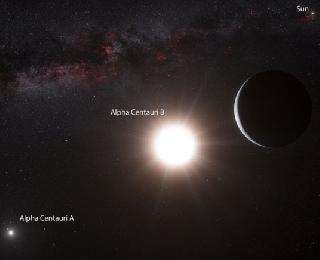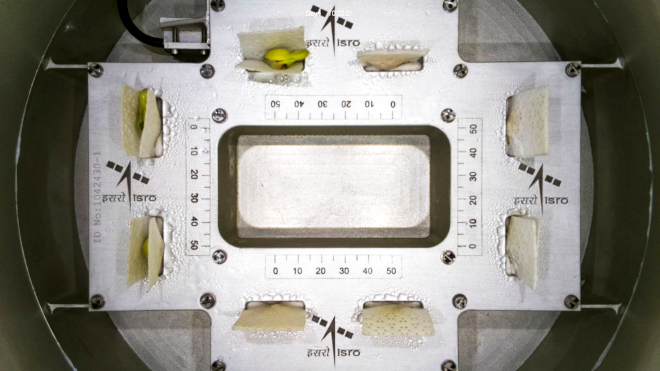
Artist's impression of the planet around Alpha Centauri B. An ESO image
PARIS (BNS): A group of European astronomers has for the first time spotted an Earth-like planet in a nearby stellar body lying just 4.3 light-years away from our Solar System.
The new-found exoplanet, with a mass of a little more than that of the Earth, is orbiting a star in the Alpha Centauri system.
The Alpha Centauri is one of the brightest stars in the southern skies and consists of three stars - two stars similar to the Sun orbiting close to each other, designated Alpha Centauri A and B, and a more distant and faint red component known as Proxima Centauri or Alpha Centauri C.
Since the nineteenth century, astronomers have speculated about planets orbiting these bodies - the closest possible abodes for life beyond the Solar System - but searches of increasing precision had revealed nothing.
Astronomers, using the HARPS instrument on the 3.6-metre telescope at European Southern Observatory's La Silla Observatory in Chile, have detected the planet which is orbiting the star Alpha Centauri B in every 3.2 days and is also the lightest exoplanet ever discovered around a star like the Sun.
The new discovery is reported online in the journal Nature on 17 October 2012.
"Our observations extended over more than four years using the HARPS instrument and have revealed a tiny, but real, signal from a planet orbiting Alpha Centauri B every 3.2 days. It's an extraordinary discovery and it has pushed our technique to the limit!," Xavier Dumusque (Geneva Observatory, Switzerland and Centro de Astrofisica da Universidade do Porto, Portugal), lead author of the paper, said.
The Alpha Centauri B is very similar to the Sun but slightly smaller and less bright. The newly discovered planet is orbiting about six million kilometres away from the star, much closer than Mercury is to the Sun in the Solar System.
The orbit of the other bright component of the double star, Alpha Centauri A, keeps the planet hundreds of times further away.
The close proximity of the planet to its host star could make it too hot to harbour life, believe the researchers.
"This is the first planet with a mass similar to Earth ever found around a star like the Sun. Its orbit is very close to its star and it must be much too hot for life as we know it, but it may well be just one planet in a system of several," said Stéphane Udry (Geneva Observatory), a co-author of the paper and member of the team.
"Our other HARPS results, and new findings from Kepler, both show clearly that the majority of low-mass planets are found in such systems," the researcher added.
"This result represents a major step towards the detection of a twin Earth in the immediate vicinity of the Sun. We live in exciting times!" said Xavier Dumusque.
 Previous Article
Previous Article Next Article
Next Article











The Indian Air Force, in its flight trials evaluation report submitted before the Defence Ministry l..
view articleAn insight into the Medium Multi-Role Combat Aircraft competition...
view articleSky enthusiasts can now spot the International Space Station (ISS) commanded by Indian-American astr..
view article